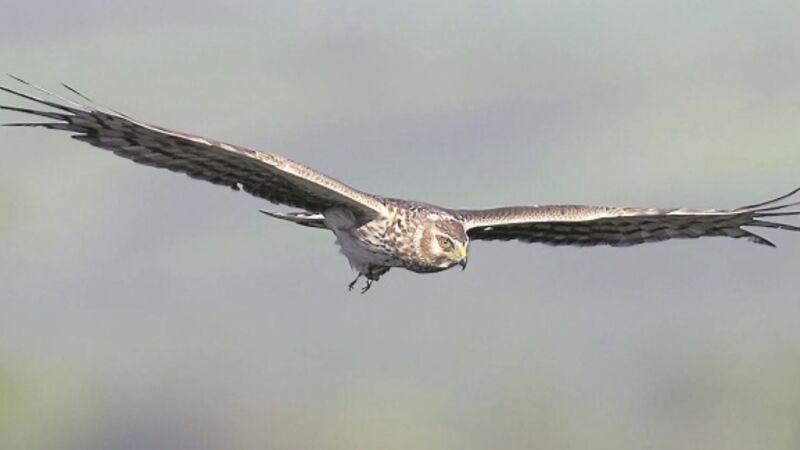‘Seagull Hawk’ hen harrier still vulnerable

This bird of upland blanket bogs and young forestry plantations visits farmland in winter. Its ancestors may have raided chicken coups, but today’s harriers don’t. They are partial to the odd grouse chick, however, which infuriates game-keepers.
The sexes differ so much in appearance that Francis Willughby, in the late 17th Century, listed them as separate species. The brown-plumaged female is bigger than her pearly grey mate. Francesca Greenoak in British Birds, their Folklore Names and Literature, claims that the species was known as the ‘seagull hawk’ in Connemara; the pale plumaged male resembles a gull at a distance. Both sexes have conspicuous white rumps. Harriers fly close to the ground, mounting surprise attacks on unsuspecting birds and mammals. Small songbirds are their usual victims but mice voles and young rabbits are also taken. Harriers nest on the ground in young conifer plantations but these areas are abandoned once the trees are about 15 years old.










